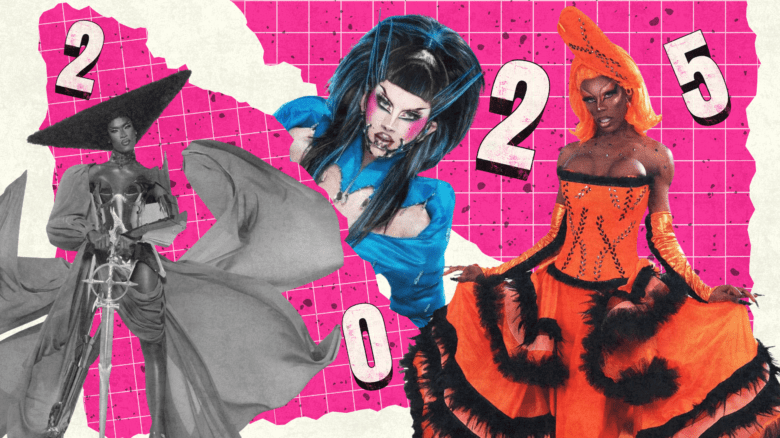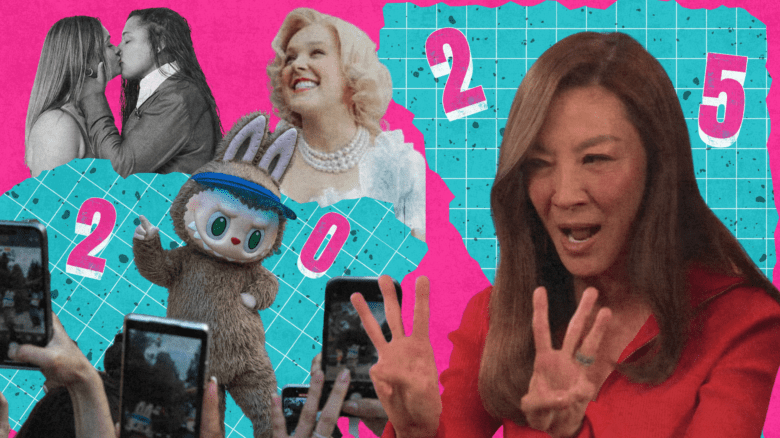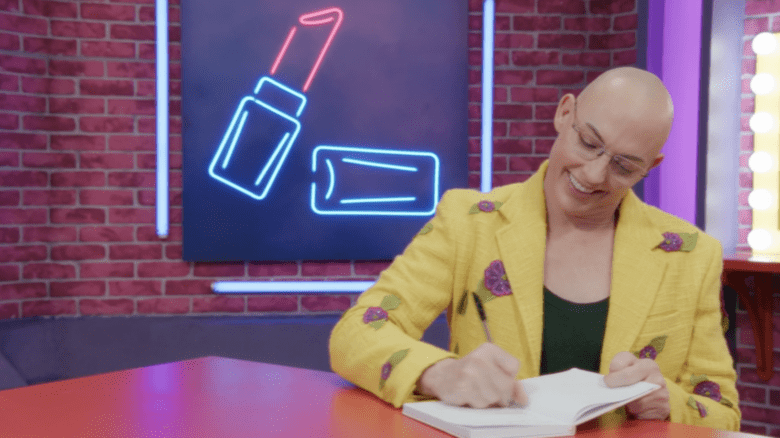Tales of the City, Armistead Maupin’s sprawling melodrama that sashayed to life in 1970s San Francisco, remains one of the best-loved works of LGBTQ2 literature. Set in the queer idyll of 28 Barbary Lane, a boarding house presided over by trans landlady Anna Madrigal — who dishes out nuggets of wisdom, rolled joints and unconditional love — the series delivered an addictive mix of trashy plots and brilliant characters. For 40 years, fans have turned to Tales of the City for both escapist fun and radical realism. Now a Netflix miniseries helmed by Orange is the New Black writer and producer Lauren Morelli, the fresh adaptation will attempt to win over a new generation of fans with its major renovation of 28 Barbary Lane.
This version brings back stars from the original 1993 series: Olympia Dukakis as Anna Madrigal, now 90 and under pressure to sell Barbary Lane; Laura Linney as Mary Ann Singleton, still naive, though that’s less appealing in middle age; and Paul Gross as Brian Hawkins, the former playboy still getting schooled in masculinity. New to the cast is Looking’s Murray Bartlett in the role of Michael “Mouse” Tolliver, while a fresh set of twentysomething characters is led by Oscar nominee Ellen Page. She gives a riveting performance as the sardonic, omnisexual Shawna Hawkins, Brian’s daughter, who finds herself drawn to a brooding filmmaker played by Girls’ Zosia Mamet.
Previous Tales were overwhelmingly white, but this millennial makeover brings diversity: Russian Doll’s Charlie Barnett plays Ben, Michael’s younger, African-American lover, while single-named, non-binary newcomer Garcia plays Jake Rodriguez, Anna Madrigal’s trans caregiver. (In the book, Jake’s surname is Greenleaf.) Jake’s recent transition severely tests his relationship with his lesbian girlfriend Margot, played by May Hong, which is arguably the most beautiful storyline in the new series. It’s also an indication of the most radical change to Barbary Lane: the trans experience takes centre stage.
“I think Anna Madrigal is a remarkable, history-making character,” Morelli said while in Toronto for a screening at the Inside Out film festival. “But she comes dangerously close to becoming a magical trans lady who spins wisdom and doesn’t do much else. So we got really enamored with a backstory that complicated her, that let her make mistakes and then reckon with those mistakes in the present.”
Morelli, 36, says she wouldn’t have cast Dukakis, a cis woman, as Anna if the series was starting from scratch — the role would have gone to a trans woman. A compromise finds trans actor Jen Richards cast as the young Anna. One episode transports viewers back to the 1960s when Anna, fresh off the bus to San Francisco, learns to navigate the treacherous world of police shakedowns and sex work, as well as the very real threat of a violent death. Also starring the amazing Daniela Vega from A Fantastic Woman, the episode offers a master class in trans ensemble acting. It’s thrilling — and it shows Morelli’s commitment to authentic representation and anti-appropriation. Lambda award–winning memoirist Thomas Page McBee bolsters the series’ trans bona fides as a member of the all-queer writing team, and two of the six-person directorial team (Silas Howard and Sydney Freeland) are trans.
“‘To show queer people living their lives and receiving love and acceptance and joy because of their identities — that still feels revolutionary,’ says Morelli”
“Who is the most marginalized amongst us right now?” Morelli said. “Certainly it’s the trans community. And so portraying a diverse range of trans experience felt important. This is what Armistead has done for us, so we’re just carrying it forward. To show queer people living their lives and receiving love and acceptance and joy because of their identities — that still feels revolutionary.”
It’s hard to tell how this mix of young and old, transgressive and familiar will play out. Can it attract younger viewers without alienating older fans with a purist devotion to the original? If it’s an uncomfortable fit at times, so be it — that’s an apt reflection of the tensions and divisions that exist today between and among queers of different generations. This remodelled Tales of the City is doing what it has always done: offering a way through the confusion of the now, with its shifting identities and changing social dynamics, to arrive at the promise of the new. Context is everything.
Each generation gets the Tales it needs.
“Sooner or later we must join the diaspora,” writes Maupin in his 2017 memoir, Logical Family, “venturing beyond our biological family to find our logical one, the one that actually makes sense for us. We have to, if we are to live without squandering our lives.”
Maupin, a Vietnam War vet and former Republican from a Southern segregationist family, was around 30 years old when he came out and began writing Tales. It was a way for him to find his true self. Fiction was Maupin’s entrée to a new reality.
For much of our history, LGBTQ2 people were forced to live inside lies. Society fed us these lies and we, in turn, took them to heart: that we were immoral, sick and unworthy of the label “human.” We were starving for stories that reflected our real lives, and a cameo or two on a TV sitcom or a single mawkish movie of the week was not going to cut it. Maupin was part of a civil rights movement that undercut storylines of hatred and violence. When Tales of the City appeared in the mid-1970s, first as newspaper columns in the San Francisco Chronicle, then as a series of novels, it revolutionized how LGBTQ2 people thought about ourselves. With equal parts wit and compassion, Maupin created a sunny entertainment that parted the gloom, illuminating extraordinarily ordinary lives, a process he called, “making ourselves known.”
By 1977, a few years after Maupin started writing Tales, California had legalized homosexuality and anti-discrimination laws had been enacted from Quebec to Florida. That same year, an out gay man, Harvey Milk, was elected to San Francisco city council.
But a year later, a backlash was in full swing. Jerry Falwell founded the Moral Majority in the US to fight LGBTQ2 and abortion rights, Ronald Reagan began using anti-LGBTQ2 propositions to boost his third run for the presidency and Dan White murdered Harvey Milk and San Francisco mayor George Moscone. Violence and hatred are storylines with incredible staying power.
The 1980s was a decade of incalculable devastation and trauma. By the end of 1993, some 250,000 people had died from AIDS in North America alone. Reagan’s administration remained inactive and silent. Ordinary LGBTQ2 folks, artists and activists rose to meet the AIDS crisis with incredible urgency. It radicalized us. It exhausted us, too. So when PBS picked up the first TV adaptation of Tales of the City in early 1994, queers and straights alike recognized how lucky they were to be invited back to 28 Barbary Lane and returned to the sweet-hearted libertines of 1970s San Francisco. Tales is the highest-ever rated drama on PBS to date.
But such success couldn’t go unchallenged.
Fresh from their victory cutting the budget of the National Endowment for the Arts for its support of queer art, Republicans in Congress threatened the very existence of PBS because it aired Tales of the City. The Culture Wars were on. PBS declined to make a sequel.
The 1990s and 2000s, however, brought a sea change in attitudes: protections for gay men and lesbians; the AIDS cocktail; the legalization of same-sex marriage; adoption rights for LGBTQ2 parents. Queer storytelling was making incredible strides, too. Mainstream (if problematic) works like Philadelphia and Will and Grace existed side by side with the New Queer Cinema of Todd Haynes, Isaac Julien, John Greyson, Gus Van Sant, Gregg Araki and Cheryl Dunye.
These works, in turn, helped spawn the next great wave of queer storytelling on cable TV and streaming services in the 2000s and 2010s, with shows like Queer as Folk, The L Word, Orange is the New Black, Transparent and Pose. That brings us full circle, as creatives from this new wave are now the ones remodelling the grand old painted lady at 28 Barbary Lane.
“With Trumpian chaos and cynicism threatening to overwhelm all discourse, with racism given presidential imprimatur and with the planet literally on fire, we need that escape to 28 Barbary Lane more than ever.”
But we’ve been here before. We know the price of progress is often backlash. Trans folks today are under attack on multiple fronts, from the Trump administration’s rollback of protections for health services, shelters and schools and the banning of trans people serving in the military, to numerous anti-trans bills at the state level. All of this has occurred alongside a horrific increase in the number of murdered trans women over the past few years, especially trans women of colour and Indigenous trans women. Stories of violence and hatred remain as potent as ever.
With Trumpian chaos and cynicism threatening to overwhelm all discourse, with racism given presidential imprimatur and with the planet literally on fire, we need that escape to 28 Barbary Lane more than ever. Escape, however, doesn’t mean retreat. Maupin’s genius lay in his unique ability to ground escapism in reality. This new Tales of the City continues to speak to the revolutionary potential of simply recognizing a shared humanity in others and ourselves.
Tales of the City launches on Netflix on June 7.


 Why you can trust Xtra
Why you can trust Xtra


